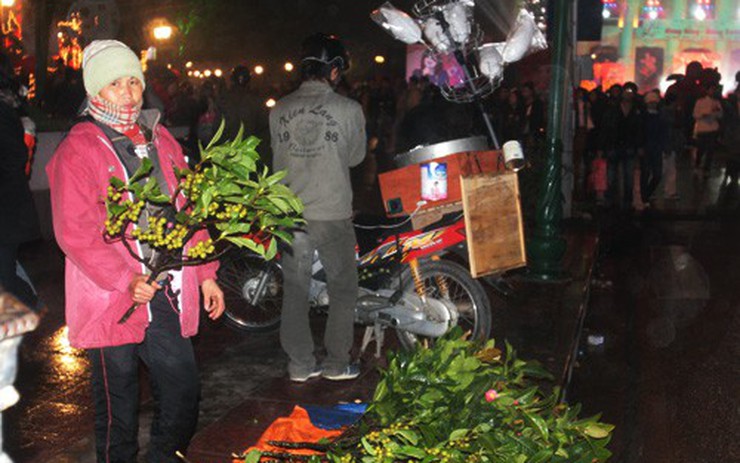Picking buds on New Year's Eve for good luck
Vietnamese people frequently visit pagodas and temples after New Year's Eve to burn incense and pick lucky buds.

The ancients believed that selecting spring buds from plants like banyan trees, fig trees, weeping fig trees, and acacia trees would bring people the most luck.
>> Go to Tet flower markets in Vietnam
The origin of picking a fortune
The practice of collecting buds has its roots in the legend of Hung King, says author Bui Xuan My in his book "Critiques in Vietnamese Families," which was published by Culture and Religion Publishing House. In order to pass on fortunate omens to his offspring, he went out to play in the spring and collected buds to bring back.
When the kids were older, Hung King chose lucky days and months to sacrifice to heaven and earth on top of Nghia Linh Mountain (now in the province of Phu Tho), asking for the blessing of the rain and wind as well as the happiness of all.
Early in the morning, when the sun was rising in the East, the King gave each son a bud and instructed them in the following: "Even when they are young, they still go to the sea; the young stay at home; the old go to hamlets."
"If you encounter any misfortune, you should bring this twig of buds still covered with morning dew and shake it to the sky, then wild beasts and evil spirits can't hurt you," Hung King instructed their sons to take this twig of buds to guard the directions and instruct the people to conduct business on the way.
This cultural beauty has been passed down through many centuries for all time. People used to travel to the spring on New Year's Eve to pray for luck. People go to temples and pagodas to perform the ceremony after picking an appropriate departure direction.

Many people often pick buds on New Year's Eve for good luck
The meaning of picking buds
The ancients believed that selecting spring buds from plants like banyan trees, fig trees, weeping fig trees, and acacia trees would bring people the most luck since these trees resembled four sacred animals, including dragons, unicorns, turtles, and phoenixes.
There are two definitions for "fortune," the first being a bud and the second being a boon.
Accordingly, a sprout that has just emerged from the stem or from the leaf axils will be referred to as "picking buds in early spring."
After arriving at the common home or pagoda to burn incense at the start of the year, folks would traditionally pick a bud to take home and hang in front of the house or place on the altar in the hopes that it would bring blessings to the family.
There are many instances where there are too many people and they must stand outside in the yard carrying incense, bowing, and praying instead of participating in the rite in front of the altar. A few incense sticks are sometimes brought home and placed in a bowl of Tao Quan incense. The incense sticks' red flame represents the Buddha's wealth.
Today, however, the practice of picking buds should be accompanied by environmental protection to prevent harm to trees. Some people can purchase sugar cane if they choose not to pluck trees.








